
Guests
- Blanche Wiesen Cookdistinguished professor of history and women’s studies at John Jay College and the Graduate Center of the City University of New York. She is the author of the definitive three-part biography of the former first lady: Eleanor Roosevelt, Volume 1: The Early Years, 1884-1933, Eleanor Roosevelt, Volume 2: The Defining Years, 1933-1938 and Eleanor Roosevelt, Volume 3: The War Years and After.
2020 marks the 100th anniversary of the 19th Amendment, which guaranteed women the right to vote, and we begin the new decade with a New Year’s Day special about one of the most influential women in U.S. politics: first lady Eleanor Roosevelt. She served as the first lady of the United States from 1933, when her husband Franklin D. Roosevelt took office, until his death during his fourth term in office in 1945. She went on to serve as United States delegate to the United Nations General Assembly and spearheaded the United Nations Declaration on Human Rights. President Harry Truman later called her the “First Lady of the World.” We speak with the prize-winning historian Blanche Wiesen Cook, distinguished professor of history and women’s studies at John Jay College and the Graduate Center of the City University of New York. She is the author of the definitive three-part biography of the former first lady: “Eleanor Roosevelt, Volume 1: The Early Years, 1884-1933,” “Eleanor Roosevelt, Volume 2: The Defining Years, 1933-1938” and “Eleanor Roosevelt, Volume 3: The War Years and After.”
Transcript
AMY GOODMAN: This year, 2020, marks the hundredth anniversary of the 19th Amendment, which guaranteed women the right to vote. We begin this new decade with an hour-long special about one of the most influential women in U.S. politics, Eleanor Roosevelt, who served as the first lady of the United States from 1933, when her husband Franklin Delano Roosevelt took office, until his death during his fourth term in office in 1945. That wasn’t the end of the story for Eleanor Roosevelt, though. She went on to serve as United States delegate to the United Nations General Assembly and spearheaded the U.N. Convention on Human Rights. President Harry Truman later called her the “First Lady of the World.”
I recently sat down with Blanche Wiesen Cook, distinguished professor of history and women’s studies at John Jay College and the Graduate Center of the City University of New York. She’s the author of the definitive three-part biography of the former first lady: Eleanor Roosevelt, Volume 1: The Early Years, 1884-1933, Volume 2: The Defining Years, 1933-1938 and Eleanor Roosevelt, Volume 3: The War Years and After. Blanche Wiesen Cook started out as a military historian. I began by asking her how she came to write this trilogy on Eleanor Roosevelt.
BLANCHE WIESEN COOK: Well, I always say my life is an accident, because things just happened accidentally. And I started out in life where I cared about nothing but sports and music, and I had an accident. I was a gymnast. And a boy put a barbell at the end of a mat, and I came out of a triple flip onto it, and that was — I felt that was the end of my life. And I couldn’t major in phys. ed., and I couldn’t go to the Olympics, and I had to major in other things — history, anthropology, political science. And I majored in all of that.
And then I went off to Abilene, Kansas, to write about Eisenhower. And friends sent me books to review. And Cate Stimpson, then-editor of Signs, sent me a really stupid book on Eleanor Roosevelt and Lorena Hickok. It was the first book that used her papers, but the author was horrified by the letters and wrote, “This book couldn’t possibly mean what it seems to mean, because Eleanor was a saint and a mermaid.” And I wrote a review of the book saying, you know, pace Freud, “A cigar may not always be a cigar, but the northeast corner of your mouth upon my lips is always the northeast corner.” Whereupon a lot of folks started to say, “Why don’t you write about Eleanor Roosevelt?” And I would answer, “Don’t be ridiculous. I’m a military historian. I do international relations and so on, or,” I even said, “hard history.” And I was wrong.
But I called up my pal Joe Lash, and Joe had become a good friend because he blurbed my book on Crystal Eastman, which is going back into print. It was published by Oxford. And Joe said, “This is a book that should stay in print forever.” Crystal Eastman was a founder of the ACLU, and among other things.
AMY GOODMAN: And explain who Joseph Lash is.
BLANCHE WIESEN COOK: Joseph Lash was the biographer of Eleanor Roosevelt, really her chosen son. They were very close. And Joe was a good son, so anything that Eleanor Roosevelt said, Joe wrote, and anything she said she didn’t want dealt with, he didn’t deal with. And then she said, “I don’t care about power,” and he wrote, “She didn’t care about power.” And then I knew I had a story. But first, I called him up, and I said, “Joe, what’s up with you not having Hick at all in any of the many books you’ve written about Eleanor Roosevelt?” And he said, “Well, I hated her. But let’s have dinner.” And we had dinner, and he suggested that I really needed to write about Eleanor Roosevelt. And he took me up to Hyde Park, and I saw the papers. We walked through them together.
AMY GOODMAN: Hyde Park, where the Roosevelts lived.
BLANCHE WIESEN COOK: Where the Roosevelt — and where the FDR Library is. And it’s called the FDR Library even to this day. It’s not called the FDR and Eleanor Library. Anyway, and so I thought — this was like 1981, and I thought I could finish it by her centennial, 1984. But that’s not what happened. It just got bigger and bigger. And one of the ways that it got bigger was a lot of things were classified. And working on my Eisenhower book, I always say, “Never go anywhere without your gang.” When I was working in Abilene, everything I wanted was secret. And so I flew back to New York, and I called a meeting with my pals in law and journalism, the CCR and the ACLU. And we founded FOIA, Inc., the Fund for Open Information and Accountability. And we got lots of things declassified over the years. And a lot of Eleanor Roosevelt’s materials were declassified. The State Department files were classified, and I got those declassified. And then folks gave me gifts of papers that had never been seen before, so they’re going to the FDR Library. And it just got — it just got bigger and bigger, and the stories got more and more intense. And that’s why it took so long.
AMY GOODMAN: Was Eleanor Roosevelt ever explicit about fighting for gay and lesbian rights, for LGBTQ rights? And what did FDR understand about her relationship with Hick, Lorena Hickok, who was the AP reporter? And can you describe what that relationship was all about more fully?
BLANCHE WIESEN COOK: Well, one didn’t use those words in the 1960s, and, you know, people just didn’t talk about it. So, everybody’s in the closet. All of Eleanor Roosevelt’s friends are lesbians — Esther Lape and Elizabeth Read, Nancy Cook and Marion Dickerman. And then comes Hick. But Eleanor Roosevelt, I think of her as a serial romantic. There’s Earl Miller, and all of Earl Miller’s papers have disappeared.
AMY GOODMAN: Who is Earl Miller?
BLANCHE WIESEN COOK: Earl Miller was her bodyguard. And, you know, I have pictures of Earl Miller in his bathing suits, her hand on his knee. He was a hunk, you know, just an athlete. He got her her horse, Dot. They rode together. He taught her to shoot with pistols and rifles. And, you know, they hiked together. They traveled together. So Earl Miller is in her life. And Hick is in her life.
AMY GOODMAN: Your book, in —
BLANCHE WIESEN COOK: My book was the first to really deal with their relationship in a very full way. Their letters are full of politics and love and longing.
AMY GOODMAN: And how long did their relationship go on for?
BLANCHE WIESEN COOK: Well, I think it lasted until about 19— four years, until about 1936. By 1938, it’s really — you know, the romance is gone. The friendship lasts forever, but the romance is gone. And Eleanor Roosevelt becomes increasingly dismayed by her occasional bigotries. She doesn’t like Eleanor Roosevelt’s young Jewish friends. She doesn’t like her black friends. And she’s a bit of a racist, and Eleanor Roosevelt gets increasingly impatient with Hick and moves on.
AMY GOODMAN: I mean, she wrote about fighting segregation. Did she ever write about prejudice against gay men, lesbians?
BLANCHE WIESEN COOK: No, not that I know of. Not that I know of. But she does say at one point that “Love is a kind of insanity. You do strange things when you fall in love.” And so, there’s this sense of the fluidity of love and romance.
AMY GOODMAN: Blanche, your first book deals with the early years. Talk about the early years of Eleanor Roosevelt. But before you do, especially for young people who have hardly heard of her, why she captured your interest as a woman, in terms of her life, and then what happened in World War I and beyond?
BLANCHE WIESEN COOK: Well, the early years, I mean, Eleanor Roosevelt lived a really very difficult life. We know her as a great and generous philanthropist. We know her as an activist. And a lot of people have always asked me, “How did she get that way?” And one of the ways that she got that way has a lot to do with her family. Her father was an alcoholic who died at the age of 34. And we need to pause. I mean, how much do you have to drink to die at the age of 34? You know, we’re still here, I like to tell my students. Anyway, the bottom line is, she loved her father, and he died when she was 10. Her mother essentially turned her face to the wall and died when she was 8. And she was brought up by her grandmother, who was very rigid, and a series of aunts and uncles, who lived in these houses in Tivoli, in New York.
AMY GOODMAN: She was a Roosevelt.
BLANCHE WIESEN COOK: She was Roosevelt. Theodore Roosevelt was her uncle, her father’s brother. And while she was a woman of wealth, she came from a very troubled family.
AMY GOODMAN: So, Teddy Roosevelt, the president of the United States, his brother died at the age of 34 of alcoholism.
BLANCHE WIESEN COOK: Yes. And Eleanor Roosevelt’s life was really quite miserable, until she went off to a wonderful school and had a great headmistress and teacher and mentor, Marie Souvestre — S-O-U-V-E-S-T-R-E. I’m spelling it because there’s no biography of Marie Souvestre. And this was an incredibly wonderful school, in which there was creativity. There was — it was really for the, essentially, affluent children of the affluent French, German, American class. And Marie Souvestre was a mentor of the — you know, of the Bloomsbury crowd. She’s a fascinating woman. But she recognized Eleanor’s brilliance and Eleanor’s leadership and Eleanor’s great abilities as a writer. And we don’t give Eleanor enough credit for the fact that she was also primarily a writer. I mean, she wrote dozens of books, plus a column every day after 1936 and —
AMY GOODMAN: As first lady.
BLANCHE WIESEN COOK: As first lady.
AMY GOODMAN: A column every single day of the presidency.
BLANCHE WIESEN COOK: Well, six days, yes, yes.
AMY GOODMAN: Which went on for four terms.
BLANCHE WIESEN COOK: Right, and then continued until the end of her life. Her last column is the month before she died. So —
AMY GOODMAN: So, how does she meet FDR? How does she meet her cousin?
BLANCHE WIESEN COOK: At a debutante ball. Well, she met him earlier, but they have an attraction in 1904, '05. And they get married. And his mother, Sara Delano Roosevelt, is very unhappy about that. But they get married, and they have a romantic relationship, until she — until 1918. He comes back from Europe, where — with the flu. She unpacks his bags and sees the letters, the love letters from Lucy Mercer, who had been her friend and his secretary, and they had had this big affair. And Eleanor Roosevelt is devastated. And that's a big part of the story. And it’s after that they have a great partnership. You know, she wants to get divorced. He wants to get divorced. They decide not to get divorced. His mother said she will cut him off without a penny if they get divorced. And they agree to have a partnership.
AMY GOODMAN: When did he get sick?
BLANCHE WIESEN COOK: Two years later, 1920, polio. And she takes incredibly good care of him. And there’s a very wonderful mutual friend. The bridge between them is this really interesting man, Louis Howe — H-O-W-E. And Louis Howe really recognizes Eleanor’s brilliance. He wants her to become a politician. He wants her to follow FDR, you know, at the end of the day, in all of the political realms that — and he really promotes women in public life. And it’s also in this period, in the ’20s, where Eleanor becomes very involved, not only helping FDR in the political world, but helping really building —
AMY GOODMAN: Because Sara Roosevelt wanted her son just to become a country gentleman —
BLANCHE WIESEN COOK: Right.
AMY GOODMAN: — after he got polio.
BLANCHE WIESEN COOK: Right.
AMY GOODMAN: And she said, “No, you can stay in politics.”
BLANCHE WIESEN COOK: Right. “You’d be much happier.”
AMY GOODMAN: Historian Blanche Wiesen Cook, speaking about Eleanor Roosevelt. When we come back, we discuss Roosevelt’s impact on the New Deal.
[break]
AMY GOODMAN: This is Democracy Now!, democracynow.org, The War and Peace Report. I’m Amy Goodman, as we return to my interview with Blanche Wiesen Cook, distinguished professor of history and women’s studies at John Jay College and the Graduate Center of the City University of New York. She’s the author of the definitive three-part biography of the former first lady Eleanor Roosevelt. Her husband, Franklin Delano Roosevelt, ran for president and won in 1932 and served four terms before he died in office. I asked Professor Wiesen Cook about Eleanor Roosevelt’s role in one of his signature accomplishments during the Great Depression.
AMY GOODMAN: Talk about the New Deal, how it came about. What were the tenets of it, that are still some of those accomplishments or those goals are being fought for today?
BLANCHE WIESEN COOK: Absolutely. First, there’s Social Security. Well, first, there’s the Re-employment Act. Then there’s the Youth Act, the National Youth Administration. The goal is to get people back to work. That’s one goal. Another goal is to get young people educated, and so there is the National Youth Administration to get students into school, but also the CCC to get students out on the farms and into the woods and to do —
AMY GOODMAN: And the CCC stands for?
BLANCHE WIESEN COOK: The Civilian Conservation Corps.
AMY GOODMAN: And this is after the Depression.
BLANCHE WIESEN COOK: And this is all in response to the Depression. People are desperate. They’re out of work. They’re homeless. And it’s a really bitter moment. But the New Deal begins to get people not only back to work, but into programs that will really build community and build a future of educated, working, creative people.
AMY GOODMAN: There was another very important woman, Frances Perkins.
BLANCHE WIESEN COOK: Frances Perkins, secretary of labor, the first woman in a political cabinet. And Eleanor Roosevelt and Frances Perkins are allies. And it’s Frances Perkins, who in many ways is responsible for some of the best features of the New Deal, including the eight-hour day, including minimum standards. Eleanor Roosevelt has other friends in addition to Frances Perkins, but very close to Frances Perkins, a wonderful woman named Mary Harriman Rumsey, who is the head of a consumers’ group, and consumers have to be protected. And I bring up Mary Harriman Rumsey here because she was one of the closest friends of Eleanor — I mean, they were the five of hearts at one point, and Mary Harriman Rumsey, Frances Perkins and other people, two other people, were very close. Those were the two most prominent. Lady Lindsay is one. And they are very close. And Mary Harriman Rumsey and Frances Perkins live together in Washington, and I’m always waiting for more on that story, too.
AMY GOODMAN: Are you going to be the one to reveal it to us?
BLANCHE WIESEN COOK: No, no, no. Other people need to do that. But there’s a lot of interest now. Mary Harriman Rumsey has — she’s a wonderful horse woman and club woman, and she has a terrible accident during a fox hunt, where her horse trips and rolls over her, and ultimately she dies very young, in 1934. But she’s so important to some of the best features of Frances Perkins’ contributions.
AMY GOODMAN: Some of the things that Eleanor Roosevelt, that Frances Perkins fought for — one of the issues was universal healthcare. What happened to single-payer healthcare?
BLANCHE WIESEN COOK: OK, let me bring in yet another woman, Esther Lape — L-A-P-E. She is Eleanor Roosevelt’s closest friend and mentor, along with her partner, Elizabeth Read, who is an international lawyer and who becomes Eleanor Roosevelt’s — not only her attorney, but her financial adviser. And it’s Esther Lape who begins to fight, through the American Foundation — let me just back up a little bit, because Eleanor Roosevelt and Esther Lape, through the American Foundation, worked to get the United States, after World War I, into what the FBI, John Edgar Hoover, called that “un-American” body, the World Court. So, their first works together in the 1920s is activity to get the U.S. into the World Court, which, of course, they fail to do, and have the U.S. honor the League of Nations, which they also fail to do.
Secondly, during the New Deal, it’s Esther Lape who calls together a great community of physicians from all over the country, and they campaign for what we call today single payer. And the AMA lobbied it to death. It first was supposed to be in the 1935 Social Security Act. And as I said, the AMA lobbied it to death. Eisenhower, in the 1950s, tries to get what Esther Lape has been fighting for with Eleanor Roosevelt into the 1957 Health Reinsurance Act. And all we get out of that is the Health Reinsurance Act. But he calls Esther Lape and Eleanor Roosevelt and asks them to support him on this, and they do. And again, it’s lobbied to death. And here we are, as if it’s the first time there’s been a community of people saying we need healthcare for everybody, single payer, everything covered, you know, no questions asked. And that’s what they were fighting for in the 1930s. And from the 1930s until — Esther Lape fought for it until the day she died in the 1980s at the age of 100.
AMY GOODMAN: We’re talking to Blanche Wiesen Cook, who is really the definitive scholar on Eleanor Roosevelt, has written three volumes on the first lady, before and after. Now, you mentioned columns. From 1936 to 1962, Eleanor Roosevelt wrote a syndicated newspaper column six days a week called “My Day.” In 1939, she wrote about her decision to resign from the Daughters of the American Revolution. This is from her February 27th column.
She writes, “I have been debating in my mind for some time, a question which I have had to debate with myself once or twice before in my life. Usually I have decided differently from the way in which I am deciding now. The question is, if you belong to an organization and disapprove of an action which is typical of a policy, should you resign or is it better to work for a changed point of view within the organization? In the past, when I was able to work actively in any organization to which I belonged, I have usually stayed until I had at least made a fight and had been defeated. Even then, I have, as a rule, accepted my defeat and decided I was wrong or, perhaps, a little too far ahead of the thinking for the majority at that time. I have often found that the thing in which I was interested was done some years later. But in this case, I belong to an organization in which I can do no active work. They have taken an action which has been widely talked of in the press. To remain as a member implies approval of that action, and therefore I am resigning,” wrote Eleanor Roosevelt. Explain where she resigned from.
BLANCHE WIESEN COOK: Well, she resigned from, as you said, the DAR, because they refused to allow the great singer Marian Anderson to sing at — was it Congressional Hall? You know, which they owned, in Washington. And Eleanor Roosevelt was astonished and bewildered and knew it was wrong. But we’re really looking at the bigotry of racism and segregation in the United States, that — this is 1939, but it was vicious, all through the New Deal and to the end. And I’ll talk — I’d like to go back and talk a little bit about it.
AMY GOODMAN: Before you do, talk about the significance of Daughters of the American Revolution, and also what Eleanor Roosevelt ended up doing with Marian Anderson.
BLANCHE WIESEN COOK: Well, the Daughters of the American Revolution and the Colonial Dames — I think Eleanor Roosevelt was a member of both — if you had an ancestor, if you had ancestors who fought in the Revolution, you could be a member of the DAR. And it was a philanthropic group that supported all kinds of causes. It still is. And so, you know, this was just wrong.
AMY GOODMAN: So, since she couldn’t go into Constitution Hall?
BLANCHE WIESEN COOK: Right. Oh, there was a great concert at the Lincoln Memorial.
AMY GOODMAN: So, let’s go to that moment at the Lincoln Memorial, where the world-renowned singer —
BLANCHE WIESEN COOK: Seventy-five —
AMY GOODMAN: — Marian Anderson sang before — what?
BLANCHE WIESEN COOK: Seventy-five thousand.
AMY GOODMAN: Seventy-five thousand people. It was Easter Sunday, April 9th, 1939.
MARIAN ANDERSON: [singing “America (My Country, ’Tis of Thee)”]
My country, 'tis of thee,
Sweet land of liberty,
For thee we sing;
Land where my fathers died,
Land of the pilgrims' pride,
From ev’ry mountainside
Let freedom ring!
AMY GOODMAN: The great Marian Anderson, singing before the Lincoln Memorial, before 75,000 people, Easter 1939.
BLANCHE WIESEN COOK: She also invited Marian Anderson when the queen of England came to the United States, to be the entertainment. She had integrated entertainment for royalty. And Marian Anderson and also Mary McLeod Bethune, constantly in the White House, Eleanor —
AMY GOODMAN: The great educator.
BLANCHE WIESEN COOK: The great educator and activist and also the head of, you know, the African American Cabinet, politician, got a lot of things done. But it was really, Eleanor Roosevelt was insisting on integrating at least areas that she could integrate, in a time when it was virtually impossible. Eleanor Roosevelt’s very first and most important speech on the end of segregation, to the educators of the United States, was 11 May, 1934. And I wonder if I could read just a little from that speech.
AMY GOODMAN: And feel free to do it as you channel Eleanor Roosevelt.
BLANCHE WIESEN COOK: “To deny any part of a population the opportunities for more enjoyment in life, for higher aspirations is a menace to the nation as a whole. There has been too much concentrating wealth, and even if it means that some of us have got to learn to be a little more unselfish about sharing what we have … we must realize that it will profit us all in the long run.
“I think the day of selfishness is over; the day of really working together has come, … all of us, regardless of race or creed or color; we must wipe out … any feeling … of intolerance, of belief that any one group can go ahead alone. We will all go ahead together, or we will all go down together” — 11 May 1934.
And this was to a mostly white collection of educators, who stood and cheered those words. And after she said that, it was the very first time the educators of America, teachers in elementary school, high school, colleges and universities, all agreed, and they passed a resolution: Segregation was wrong and must be ended. 1934.
AMY GOODMAN: Racial justice was an issue that she championed her entire life. Wasn’t her last column, a month before she died in 1962, also around racial justice?
BLANCHE WIESEN COOK: Yes.
AMY GOODMAN: Why was this issue so close to her heart?
BLANCHE WIESEN COOK: I think that as she went around the country, it was the most urgent issue. People were starving to death and living in hovels or living homeless because of racial injustice, and she really did believe that it could be ended. One of the first things she does in Washington when she becomes first lady is she joins a committee to end the back-alley slums of Washington and build model housing. And this is really protested by various people in Washington, certainly by the plutocrats and the real estate people. But Eleanor Roosevelt creates a committee to do that. And she is absolutely dedicated to ending housing injustice and to ending all of the injustices about race.
AMY GOODMAN: Explain what Arthurdale was.
BLANCHE WIESEN COOK: OK. Arthurdale is this wonderful community that Eleanor creates. And let me just go a little slowly. It’s in West Virginia. And Hick is on tour for the New Deal, and she writes to Eleanor Roosevelt, “If you want to see the worst place in the United States, where miners who are out of work, coal miners who are out of work, are living in hovels, or they’re living next to the mines, they’re living in the most dreadful conditions, come join me in this area, Logan County, West Virginia.”
And Eleanor Roosevelt goes there, and immediately she determines to build a community for these out-of-work miners and their families. And at this point, she’s making rather a significant amount of money. And she gives most of her money to the American Friends Service Committee to do the kind of good work she wants done. But she puts together a team — Doris Duke is part of that team, Bernard Baruch is part of that team — a team of folks who will help her build a community.
And she has a really important vision for it. The houses will have indoor plumbing, hot and cold running water, at a time when 80% of rural America didn’t have those things. And the people will be self-sufficient. They will have garden space. They will have a half an acre, at least, maybe an acre and a half, to plant and so on. And they’ll have electricity. And she builds these incredible homes.
AMY GOODMAN: She builds Arthurdale. She also pressures for the creation of the She-She-She Camps for unemployed women?
BLANCHE WIESEN COOK: Right. There were CCC camps, and then — but there are no young girls in the CCC camps. And Eleanor Roosevelt says, “That’s not fair.” And so there’s the Camp Jane Addams in upstate New York. And Eleanor Roosevelt goes there, and then she’s very angry 'cause it's all white. And she writes to the head of the camp, “Why are there no young women of color in these camps?” And she gets women of color in these camps, including a young woman who becomes very close to her, the firebrand Pauli Murray. And there are lots of books about Pauli Murray, poet, writer, priest, Episcopalian priest, and writes many, many books and poems, memoirs. And we all know Pauli Murray.
AMY GOODMAN: And didn’t Pauli Murray have a great influence on Ruth Bader Ginsburg?
BLANCHE WIESEN COOK: She did.
AMY GOODMAN: Historian Blanche Wiesen Cook on Eleanor Roosevelt. After break, she describes what Roosevelt considered her greatest accomplishment. Stay with us.
[break]
AMY GOODMAN: This is Democracy Now!, democracynow.org, The War and Peace Report. I’m Amy Goodman, as we continue our conversation with historian Blanche Wiesen Cook, author of the definitive three-part biography of the former first lady Eleanor Roosevelt.
AMY GOODMAN: What about, in World War II, the internment camps of the Japanese? Eleanor Roosevelt had a great effect on her husband in all different ways. What happened with secluding, segregating, jailing, imprisoning Japanese Americans and Japanese?
BLANCHE WIESEN COOK: Well, the really horrible removal, the Japanese removal, into camps was horrifying to Eleanor Roosevelt. And she opposes them. She visits them. And one of the things that she does is that when she visits them, she makes sure that the young people, if they want to go to school, they will be admitted to school. If they want to go to college, she makes all kinds of arrangements for them to get scholarships to college and admitted to college. And if they want to join the military, they can join the military, which many of them do. So Eleanor Roosevelt really has an incredible influence on the camps in terms of — but, I mean, it’s just one of the most shocking things that FDR did.
And I want to go back to Arthurdale, just for one other — Harold Ickes, who was the secretary of the interior, you would think that he shared a lot of activities and visions that Eleanor Roosevelt had. But he didn’t like her, because he didn’t like bossy women, because his wife was a bossy woman, and he resented bossy women. And he wrote to FDR, saying, “Do you know what your wife is doing down there? She’s spending money like a drunken sailor. If she has her way, how are we” — and she’s building, you know, indoor plumbing and all of these things 80% of rural America didn’t have. And he says, “If she has her way, how are we going to tell the rich from the poor?” And Eleanor Roosevelt answers, “Well, in matters of such simple dignity and decency, we should not have to tell the rich from the poor.” And that is a piece of her ongoing legacy.
AMY GOODMAN: I wanted to go to the same period, in World War II, a year before the United States denied the SS St. Louis permission to dock with 937 refugees from Nazi Germany on board, 250 of whom would later be killed in the Holocaust. This is known as the “Voyage of the Damned.” Eleanor Roosevelt helped rescue another ship that arrived with hundreds of refugees, the SS Quanza. This is a clip from a documentary produced by Laura Seltzer-Duny called Nobody Wants Us, when we hear a passage from the diary of a 13-year-old girl named Malvina, who’s on the ship in 1940.
MALVINA: “I’m so relieved to be on this ship. But I hope they will allow us into the United States. I heard that another ship was turned away and sent back to Europe. What if America doesn’t want us?”
AMY GOODMAN: “What if America doesn’t want us?” Blanche Wiesen Cook, talk about Eleanor Roosevelt during the war, the issue of Jewish refugees being denied entrance into the United States. But the Quanza, that wasn’t the case, because of Mrs. Roosevelt.
BLANCHE WIESEN COOK: After the SS St. Louis, which appalled Eleanor Roosevelt, she said, “This is never going to happen again.” And —
AMY GOODMAN: Would you describe FDR as an anti-Semite?
BLANCHE WIESEN COOK: I wouldn’t say he was an anti-Semite, but I would say he did nothing, just as I wouldn’t say he was a racist, but he did nothing about race, and he did nothing about refugees. And on the question of refugees, in Volume 2, I have a whole section called “A Silence Beyond Repair.” And this is the only time that Eleanor Roosevelt is actually silent about the great tragedies that are going on in Hitler’s Europe, the great removal of people, which she knows all about, because she has a very close friend, Lady Stella Reading, and Lady Stella Reading is a member of Eleanor Rathbone’s Parliamentary Committee to Save the Perishing. So, in England, there is a committee, and Eleanor Roosevelt knows all about that committee, because there’s a correspondence between Eleanor Roosevelt and Lady Stella Reading. So she knows every detail. They know exactly —
AMY GOODMAN: She was a member of the House of Lords.
BLANCHE WIESEN COOK: Yes. They know exactly what’s going on. And Eleanor Rathbone is a member of the House of Commons, and the committee is a very powerful committee. But there’s a terrific amount of silence. In the case of the Quanza, however, Eleanor Roosevelt really works with members of the ACLU and attorneys, and says, “These people will not be sent back.” There were 86 people who were about to be sent back on the Quanza, and Eleanor Roosevelt said, “They can be here as my guests.”
And that really upset Breckinridge Long. And for me, your question, “Was he an anti-Semite?” I can’t answer that. I mean, I — you know, but the question: Why did he not fire Breckinridge Long, who was the man in charge of delay and denial, the man who sent people back? You know, there’s a Varian Fry rescue committee, the Emergency Rescue Committee, which Eleanor Roosevelt has, again, something to do with creating. But Varian Fry is prevented from carrying out his work by the State Department, by Breckinridge Long. And it’s — you know, Eleanor Roosevelt says to FDR, “He’s a fascist! Why don’t you fire him?” And FDR said, “Don’t use that word.” And she says, “Well, he is.” You know, like that.
AMY GOODMAN: So, after World War II, after FDR dies, and Eleanor Roosevelt —
BLANCHE WIESEN COOK: Truman, right.
AMY GOODMAN: What is her famous quote to a reporter as she’s —
BLANCHE WIESEN COOK: “The story is over.” “The story is over.” Right.
AMY GOODMAN: But it wasn’t.
BLANCHE WIESEN COOK: No.
AMY GOODMAN: Talk about Truman’s choice to bring her into the U.N. delegation, and what this led to, perhaps what she considered her greatest accomplishment in her life.
BLANCHE WIESEN COOK: Harry Truman appoints her to the United Nations, to its first meeting, in London in 1946. And her children are there when she gets the phone call. And she is tempted to say she can’t possibly do it, she knows nothing about international relations. And her children say, “Mother, you know everything. You’ve been there, and everybody knows you.” And off she goes.
And it’s an amazing journey, because the press, the world press — I mean, she’s sent off with people like John Foster Dulles, who are also part of the U.S. delegation. They don’t care what Dulles thinks. They only care about what Eleanor Roosevelt thinks. They follow her everywhere. And Eleanor Roosevelt makes really great friends and a great impact. And at some point, she is made chair of what becomes the Committee for Human Rights. And they work —
AMY GOODMAN: When they make her head of the Humanitarian Committee, she asks her assistant what exactly this means. He’s her liaison. She says, “What is my agenda, my portfolio?” And he says, “Actually, nothing.” And she says, “Aha, because I’m a woman and they want to have me, this prominent person, involved with the U.N., they give me nothing.” And he said, “Well, maybe you can turn this into something. Without an agenda, you can determine the agenda of the United Nations.”
BLANCHE WIESEN COOK: Right. And so, she thinks there should perhaps be a bill or a resolution or a declaration. A declaration, it could be a fantasy. But there could be a Declaration of Human Rights, the U.N. Declaration of Human Rights.
Let me just say that this is an incredible moment, because she’s unanimously elected chair to the committee that founded the Human Rights Commission. And she was part of an extraordinary team, and they’re going to write an international bill of human rights. There is John Humphrey, the Canadian international lawyer; a wonderful Chinese scholar, musician, diplomat named Peng Chun Chang, P.C. Chang; and Lebanon’s learned Dr. Charles Habib Malik; and then France’s René Cassin, who had spent the war years in London as Charles de Gaulle’s legal adviser, and he had lost his sister and about 25 other relatives in Nazi concentration camps. By 1947, René Cassin and Eleanor Roosevelt supported a Jewish homeland, while Habib Malik emerged as a leader of the Arab League. But the three of them were in absolute, shoulder-to-shoulder unity on the possibility of creating a Universal Declaration of Human Rights.
And also on that team was India’s Hansa Mehta, who is the — she’s president of the All India Women’s Conference. And she’s the only other woman on the team. And it’s Hansa Mehta who makes some very stirring contributions to the Universal Declaration of Human Rights. She says, “Excuse me, Mrs. Roosevelt. I must tell you, if you say all men are created with certain inalienable rights around the world, it will be limited to all men.” And so we get all human beings are endowed by the creator. And that is how it reads.
AMY GOODMAN: And her friend in London, the woman in the House of Lords, begins to introduce her to refugees, the massive number of refugees who come to London, who have no place to go, nothing, are completely bereft.
BLANCHE WIESEN COOK: Right. And she goes — and she visits camps, as well. She spends the summer visiting many of the refugee camps and really becomes part of a great movement to resettle refugees, not only in the United States, where there’s a great effort to do that, but in around the world.
AMY GOODMAN: So, John Foster Dulles, Senator Vandenberg, these men who were part of this U.N. delegation, are fighting every step of the way to undermine her. John Foster Dulles would later become secretary of state; his brother, Allen Dulles, head of the CIA. They would lead, secretly, the overthrows of the Mosaddegh government in Iran in 1953; in 1954, the overthrow —
BLANCHE WIESEN COOK: Overthrow of Guatemala.
AMY GOODMAN: — of Árbenz in Guatemala. But this is years before. They’re trying to undermine her. But she has to get the consensus of the world to pass this Declaration of Human Rights. How did it ultimately happen?
BLANCHE WIESEN COOK: OK. She agrees — again, it’s Hansa Mehta who suggests there be two covenants. And Eleanor Roosevelt — and the big issue is: Will the United States ever address the Universal Declaration of Human Rights? If there is only one covenant, all of the rights are connected, meaning everybody has the right to not only speak, religion, press, but also to a job, also to healthcare, also the housing. The U.S. won’t vote for that. So she compromises and agrees to two covenants: the economic and social covenant and the civil and political covenant. And I want to say what happens is it’s passed. She gets a standing ovation, 10 December, 1948.
So the Universal Declaration of Human Rights passes. But it is not ratified by the United States until much later, because, under Eisenhower, the Dulles brothers, they want nothing binding. They absolutely insist, “We don’t want any part of the Universal Declaration of Human Rights.” They walk away from it. It doesn’t come up again, until, finally, in 1966, the covenants are printed. They are ratified around the world. But not until Jimmy Carter signs them in 1977 are they even signed. And then, finally, in 1992, after the Soviet Union collapses, of all people, it’s George Herbert Walker Bush who says, “Well, maybe now that the Soviet Union has collapsed, we can ratify the civil and political covenant of the Universal Declaration of Human Rights.” And he does. But we still haven’t had a conversation about the economic and social rights covenant. So, this is all — you know, if we are fortunate enough to have a decent, visionary and human rights activist elected to the presidency, this is the unfinished business and the legacy of Eleanor Roosevelt.
AMY GOODMAN: I wanted to turn to Eleanor Roosevelt speaking in 1951 on the anniversary of the Universal Declaration of Human Rights, which, of course, she helped to write, about the link between human rights and peace.
ELEANOR ROOSEVELT: If we observe these rights for ourselves and for others, I think we will find that it is easier in the world to build peace, because war destroys all human rights and freedoms. So in fighting for those, we fight for peace.
AMY GOODMAN: Compare her to other leading politicians today. I don’t want to just leave it at first ladies, but talk about her role as a first lady. And do you see anyone walking in her footsteps, after Eleanor Roosevelt?
BLANCHE WIESEN COOK: Well, I think that Eleanor Roosevelt would be delighted by the young women who are running for office. The people around AOC, the young women in Congress today, Eleanor Roosevelt would be delighted.
A lot of people wanted her to run for office. And at some point she said, “I would rather be chloroformed than run for office.” And that was — she said she didn’t want to run for office because she wanted to be free. She wanted to be free to say what she really thought and to write what she really thought. But also, she felt that women weren’t organized sufficiently to promote and back women running for office. And she felt women — people needed really to be organized for change. There need to be movements for change. And her own activism included going door to door, block by block, community by community, and building movements. So that was a big part of what she really believed.
She also really believed that we won’t have domestic peace or international peace until everybody had free, public, excellent education, healthcare, housing, creativity, opportunity. These were things that governments exist for. And I think now we have some people, the young people and the people around Bernie and the people around Elizabeth Warren, and maybe even Buttigieg, you know, who have that vision. We’ve got to have a movement. We’ve got to have — Eleanor Roosevelt didn’t use the word “democratic socialist,” but she was a democratic socialist. You know, you really need a big vision. And you really have to have activism. And that was her contribution. And I think she would be pleased now that there are movements afoot and campaigners afoot and a new level of hope.
AMY GOODMAN: Let me end with the question, in this era of Trump, of: What would Eleanor say?
BLANCHE WIESEN COOK: Well, I think she would be totally horrified at the abdication of power by people with power. Like, why isn’t this man, accused of what? Raping 30 women? Why isn’t he in prison? How is he being protected? I think she would be entirely horrified by — well, first of all, we’ve never had a fascist in the White House before. And Eleanor Roosevelt really believed that the way to prevent fascism — and she always said fascism and communism — the way to prevent that kind of control is to have movements and responsibility. And we’re looking at a moment where folks who are in the Senate don’t have responsibility. And we’re looking at a moment where a creature has been allowed to get away with absolutely malign things. Eleanor Roosevelt would not be silent. Your silence will not protect you.
AMY GOODMAN: Historian Blanche Wiesen Cook, author of the definitive three-part biography of former first lady Eleanor Roosevelt.


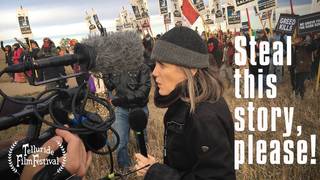
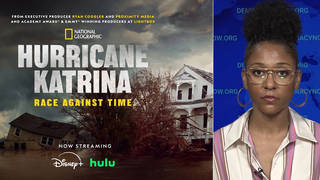

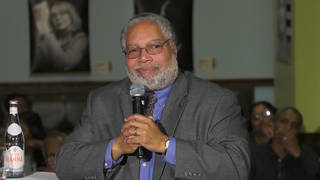

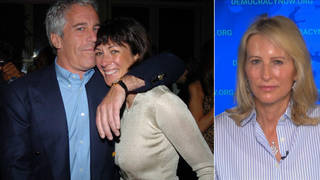
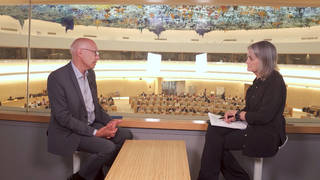

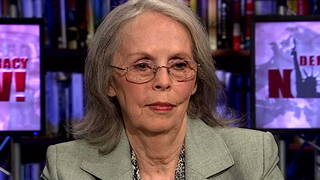
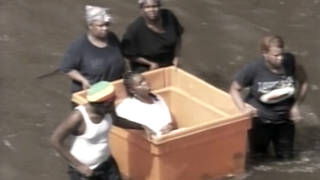
Media Options